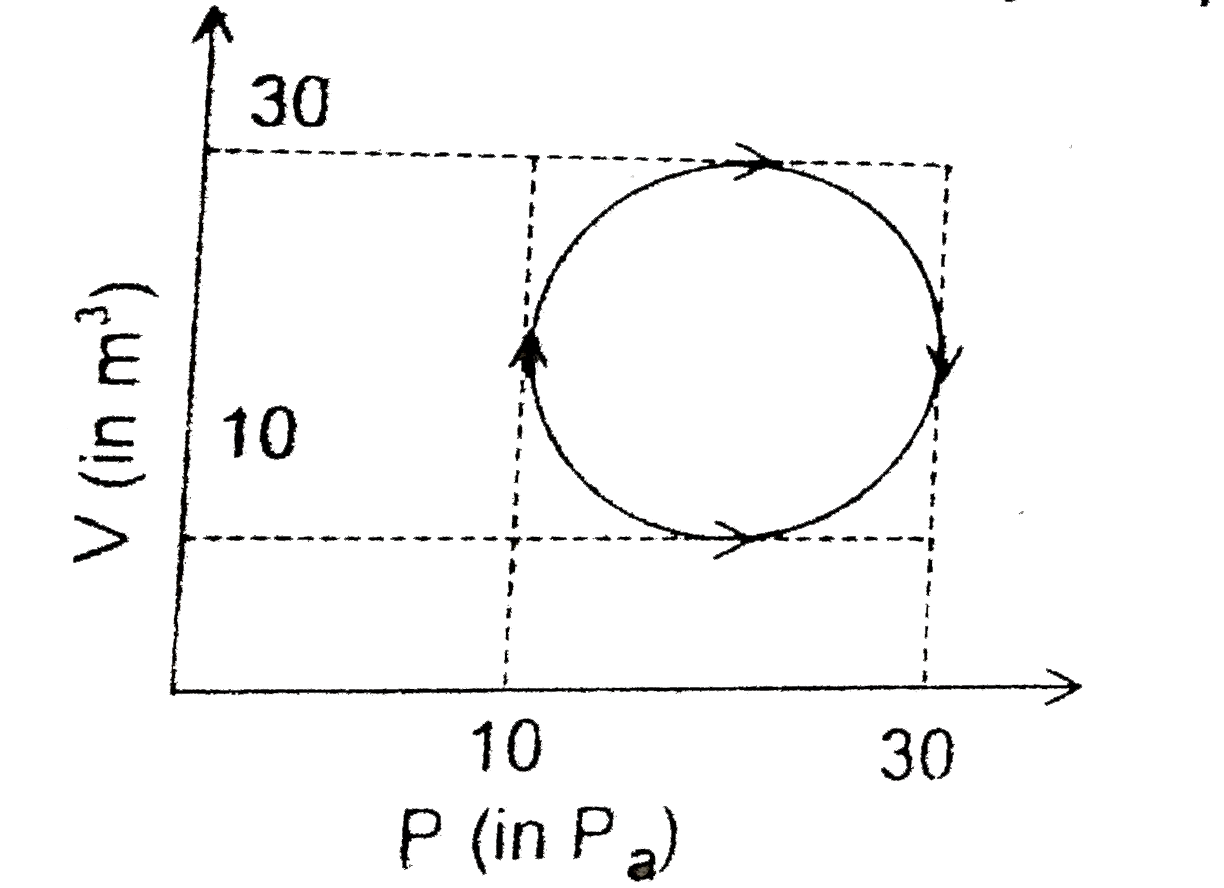A closed system participates in the following process: A→B→C. In the step A→B, heat absorbed by the system =q cal and in the step B→C, heat released by the system=q cal. Therefore, in this process the sum of the heat absorbed and heat released by the system is zero. is this an adiabatic process? Given reason.Solution in Bengali
In an adiabatic process, the system does not exchange heat with its surroundings at any step in the sprocess. In the given process, the system absorbs heat in one step and releases heat in other step. So, this process cannot be regarded as an adiabatic process.
Topper's Solved these Questions
- BOOK - CHHAYA PUBLICATIONCHAPTER - CHEMICAL THERMODYNAMICSEXERCISE - QUESTION ANSWER ZONE FOR BOARD EXAMINATION (VERY SHORT ANSWER TYPE)26videos
CHEMICAL THERMODYNAMICS
- BOOK - CHHAYA PUBLICATIONCHAPTER - CHEMICAL THERMODYNAMICSEXERCISE - QUESTION ANSWER ZONE FOR BOARD EXAMINATION (SHORT ANSWER TYPE)35videos
CHEMICAL THERMODYNAMICS
- BOOK - CHHAYA PUBLICATIONCHAPTER - CHEMICAL THERMODYNAMICSEXERCISE - Practice Set 615videos
CHEMICAL THERMODYNAMICS
- BOOK - CHHAYA PUBLICATIONCHAPTER - CHEMICAL KINETICSEXERCISE - EXERCISE (NUMERICAL PROBLEMS)37videos
CHEMICAL KINETICS
- BOOK - CHHAYA PUBLICATIONCHAPTER - CHEMISTRY IN EVERYDAY LIFE EXERCISE - PRACTICE SET 1515videos
CHEMISTRY IN EVERYDAY LIFE
Similar Questions
Classify as open, closed or isolated system: (1) A cup of coffee placed on a table (2) Water in a beaker is boiled by heating (3) Lead nitrate is heated in a test tube (4) Solid NH4Cl is heated in a closed vessel (5) Substances present in a soda-water bottle (6) Mercury enclosed in the thermometer.
01:06View SolutionAccording to the definition of thermodynamic system, which system does living beings belong to, and why?
02:37View SolutionThe condition for spontaneity of process is
04:08View Solution2A→4B+D , in this reaction, concentration of B increases to 2×10−3mol.L−1 after 10s from the start of the reaction . Calculate : rate of formation of B
05:44View SolutionWhich will not enhance nutritional value of food-
04:22View SolutionIn which of the following processes, heat is neither absorbed nor released by a system?
08:12View Solution
A system works under cyclic process as follow
Heat absorbed during the process isView SolutionIn a process, a system releases 500J of heat and work done on the system is 300J. In the process, q=____ and w=_____.
03:21View SolutionIn a process A to B to C to D , the heat absorbed by the system in the steps A to B and B to C are q_(1) and q_(2) , respetively, and the heat released by the system in the stp C to D is q_(3) . If q_(1)+q_(2)+q_(3)=0 , then will the process be adiabatic?
02:17View SolutionIn a process, q cal heat is absorbed by a closed system. If work done by the system is w cal, then what will be the value of the change in internal energy (ΔU) in this process?
View SolutionFor a closed system, determine the change in internal energy (DeltaU) when (a) q cal of heat is absorbed by the system and w cal of work is performed on the system (b) q cal of heat is absorbed by the system and w cal of work is performed by the system (c) q cal of heat is evolved by the system and w cal of work is performed on the system (d) heat is not absorbed or evolved by the system, but w cal of work is performed by the system.
03:17View SolutionWhat would be the heat absorbed by the system in the cyclic process?
02:12View SolutionArarrBrarrC A closed system participating in the process absorbs q cal heat in AB path and eliminates q cal heat in BC path. Is the process closed thermal? Give an argument
02:17View SolutionIn which of the following processes, heat is neither absorbed nor released by a system?
02:16View SolutionIn which of the following processes, heat is neither absorbed nor released by a system ?
01:38View Solution

